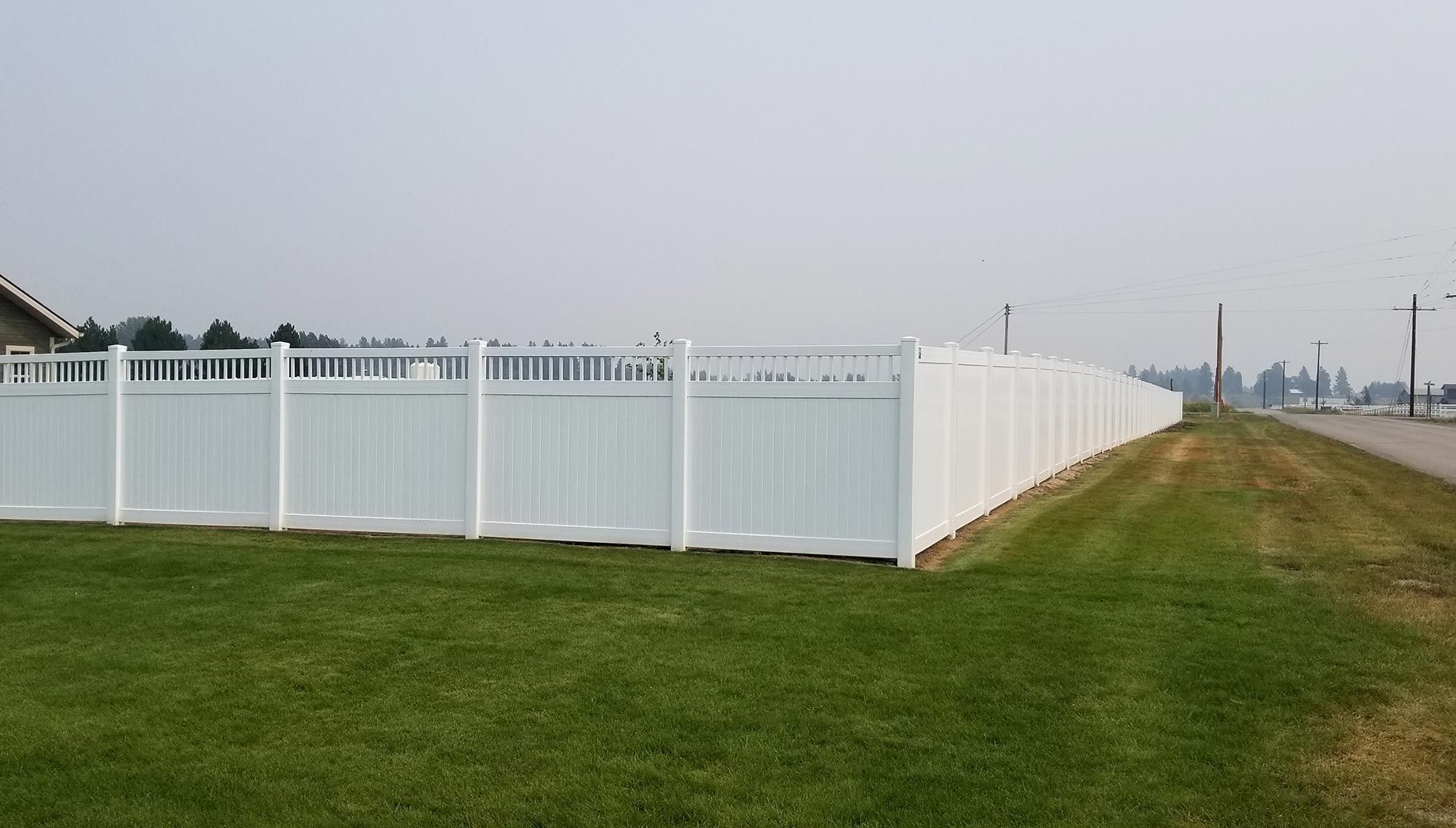Overview of Vinyl and Wood Fencing
When choosing a fence for your property, vinyl and wood are the two most popular options. Each comes with distinct benefits and limitations, making it important to weigh your priorities, aesthetic desires, and budget.
In this article, we’ll compare the key features of vinyl and wood fences to help you make an informed decision.

Pros and Cons of Vinyl Fences
- Durability: Vinyl fences are known for their durability, resisting weather damage, pests, and rot for many years.
- Low Maintenance: With no need for painting or staining, vinyl requires minimal upkeep—just the occasional wash.
- Cost: While the upfront cost can be higher, the long-term savings on maintenance make vinyl a cost-effective option over time.
- Drawback: One downside of vinyl fences is the limited range of colors and styles, which might not suit every design preference.
Why Consider Wood Fencing?
- Aesthetic Appeal: Wood fences offer a classic, natural look that can be customized with different stains, paints, or finishes.
- Cost: Wood fences are generally more affordable to install than vinyl.
- Maintenance: Wood fences need consistent care, including painting, staining, and repairs, to maintain their appearance and prevent rot.
- Lifespan: While wood fences can last many years, they often have a shorter lifespan compared to vinyl, especially in harsh climates.
Is Vinyl or Wood the Best Value for Your Fence?
Vinyl fences often come with a higher upfront cost but offer long-term savings because of their low maintenance. Wood fences are more affordable at the start but can incur additional costs due to ongoing maintenance.
For a long-term investment, vinyl may offer better value, while wood could be more economical for short-term or budget-friendly projects.
Eco-Friendly Fencing: Vinyl vs. Wood
Wooden fences are often seen as more eco-friendly due to the renewable nature of wood. However, chemically treated wood may have a higher environmental impact. Vinyl, while not biodegradable, can last much longer, reducing the frequency of replacement.
You can also make a more environmentally conscious decision by opting for sustainably sourced wood or recycled vinyl.
